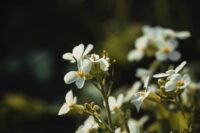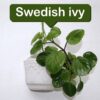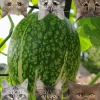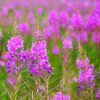Key Takeaways
- Alyssum is non-toxic and safe for pets, making it an excellent choice for pet-friendly gardens.
- Thrives in full sun to partial shade and is cold-hardy, perfect for various climates.
- Comes in a variety of colors, from pinks and purples to yellows and whites, adding vibrancy to your garden.
- Requires minimal care: regular watering, occasional fertilizing, and light pruning will do.
- Attracts beneficial pollinators like butterflies and bees, contributing to a healthy ecosystem.
When it comes to creating a pet-safe garden, the joy is in choosing plants that are as safe as they are stunning. Sweet alyssum, with its honey-scented clusters of flowers, is a favorite among gardeners and pets alike. Let’s dig into why this delightful plant is a top pick for a dog-friendly garden.
A Blossom of Delight: Alyssum Flower Specs
Imagine a carpet of tiny, fragrant flowers that not only looks gorgeous but also keeps your furry friends safe. That’s sweet alyssum for you. Known scientifically as Lobularia maritima, this plant is an annual in cooler climates and a perennial in warmer zones. It’s a low-growing, ground-covering marvel that’s as robust as it is beautiful.
Compact Charm of Alyssum Varieties
Alyssum comes in a variety of shapes and sizes, each with its own unique appeal. Whether you’re looking for a subtle white that blends into any landscape or a bold purple that pops, there’s an alyssum out there for you. Here are a few varieties to consider:
- ‘Royal Carpet’: This variety showers your garden in deep purple, with a growth that’s both dense and sprawling.
- ‘Snow Crystals’: For those who prefer a classic look, ‘Snow Crystals’ offers a crisp white bloom that’s as pure as fresh snowfall.
- ‘Easter Bonnet’: If you’re after a softer touch, the pastel shades of ‘Easter Bonnet’ provide a gentle splash of color.
Thriving in Your Zone: Climate Fit for Alyssum
Most importantly, alyssum is a trooper across many climates. Typically an annual up to Zone 8 and a short-lived perennial in Zones 9-11, it can withstand a light frost and will continue to bloom from spring until the first hard frost. Because it’s cold-hardy, you can count on it to be one of the first and last blooms in your garden each year.
For those in cooler climates, fear not. Alyssum can often be planted in early spring, as soon as the soil can be worked. In warmer regions, it can even provide year-long color if protected from the hottest sun. This resilience makes it a fantastic choice for gardeners in a wide range of zones.
Vibrant Palette: Exploring Alyssum Colors
Besides being pet-friendly and easy to care for, alyssum also brings a kaleidoscope of colors to your garden. The traditional white sweet alyssum is a classic, but there’s so much more to discover:
- For a touch of royalty, try purples and lavenders that add depth and contrast.
- Yellows and golds can brighten up any corner, sparkling like little suns among the green.
- Don’t overlook the soft pinks that can lend a gentle, romantic feel to your space.
Now, with these vibrant options in mind, let’s move on to how to keep your alyssum blooming happily alongside your pets.
Creating a pet-safe garden isn’t just about avoiding toxic plants. It’s also about choosing flora that can handle a bit of rough and tumble from our furry friends. Alyssum, with its sturdy nature and low-growing habit, is perfect for high-traffic areas where pets love to roam.
A Place in the Sun: Finding the Sweet Spot for Sunlight
Alyssum is a sun-loving plant, thriving best with at least six hours of full sun each day. However, it’s versatile enough to tolerate partial shade, especially in hot climates where the afternoon sun can be intense. To ensure your alyssum gets the right amount of light, consider these tips:
- Observe your garden throughout the day to identify spots that receive ample morning sunlight but are shaded during the peak afternoon heat.
- For gardens with less sunlight, choose alyssum varieties that are known to perform well in partial shade.
- Remember that sunlight is not only crucial for blooming but also for keeping the plants dry and less prone to diseases.
With the ideal spot picked out, your alyssum will reward you with a longer blooming season and more vibrant colors.
The Right Snip: Pruning Alyssum for Continued Bloom
Pruning is another secret to a flourishing alyssum display. This plant will often keep blooming without deadheading, but a quick trim can encourage a fuller shape and even more flowers. Here’s how to give your alyssum the right snip:
- Once the initial blooms begin to fade, use scissors or your fingers to lightly pinch off the top one-third of the plant.
- Be gentle – alyssum is delicate, and rough handling can damage the stems.
- After pruning, give your plants a little extra water and maybe a dose of balanced, all-purpose fertilizer to encourage new growth.
And just like that, your alyssum will bounce back, ready to show off a fresh set of blooms.
Building a Haven: Alyssum in Your Pet-Safe Garden
As pet owners, our hearts often race with worry about whether the beautiful plants we bring into our gardens are safe for our beloved animals. The good news? Alyssum is non-toxic to both dogs and cats, making it an excellent choice for pet parents looking to spruce up their outdoor space without the worry.
Why Alyssum is a Pet’s Ally: Non-Toxic Credentials
Alyssum’s safety for pets is not just a claim; it’s a fact backed by its non-toxic nature. This means that even if your curious cat or digging dog comes into contact with the plant, there’s no need to panic. Of course, we should still encourage our pets to steer clear of munching on any garden plants, as excessive ingestion of non-toxic plants can still cause mild stomach upset in some pets.
- Non-toxic to dogs and cats – no harmful effects if accidentally ingested.
- Edible flowers – alyssum blooms are not only safe but can also be eaten by humans, adding to their charm.
- Ideal for pet-friendly gardens – alyssum’s safety makes it a worry-free choice for areas where pets love to play.
Now that you know the safety profile of alyssum, let’s explore how to integrate it with other plants for a pet-friendly garden paradise.
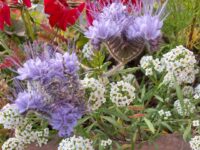
Pairing with Alyssum: Companions for a Happy Pet Garden
Companion planting is a fantastic way to enhance the beauty and functionality of your garden. When selecting companions for alyssum in a pet-safe garden, consider plants with similar non-toxic profiles and growing conditions. Here are some pet-friendly plants that make excellent neighbors for alyssum:
- Marigolds: Not only do they add a pop of color, but they also repel pests that could harm your pets and plants.
- Catnip: A favorite among felines, catnip is safe for cats and can provide them with their own garden delight.
- Snapdragons: With their intriguing shape and safe nature, snapdragons are another great choice for adding vertical interest to your garden.
By combining these companions with alyssum, you’re creating a garden that’s as safe as it is stunning – a true haven for your pets.
Welcoming Wings: Attract Pollinators with Alyssum
Attracting pollinators to your garden isn’t just about the beauty of fluttering butterflies and buzzing bees; it’s about supporting a thriving ecosystem. Alyssum, with its sweet scent, is a magnet for these beneficial insects. By planting alyssum, you’re contributing to the health of your local environment.
The Sweet Scent of Attraction: Luring Butterflies and Bees
The fragrance of alyssum is not just for our enjoyment; it serves a greater purpose in the garden. The sweet honey-like aroma draws in pollinators, which are vital for the reproduction of many plants. Here’s why this is important:
- Pollinators transfer pollen from one flower to another, fertilizing the plants so they can produce fruits and seeds.
- Butterflies and bees are attracted to the clusters of tiny flowers that alyssum provides, making it easier for them to collect nectar and pollen.
- By planting alyssum, you’re offering a valuable food source for these creatures, especially during the seasons when other flowers may not be in bloom.
Therefore, when you see butterflies and bees visiting your alyssum, know that you’re playing a part in the cycle of life that keeps our planet blooming.
Alyssum’s Role in the Ecosystem: Beyond Beauty
Alyssum does more than just add charm to your garden; it plays a significant role in the larger ecosystem. Its ability to attract pollinators helps to ensure the survival of many plant species and contributes to a healthy, biodiverse environment. But the benefits don’t stop there:
Alyssum’s dense growth habit can also help prevent soil erosion, and its flowers can be a source of food for beneficial insects that control pests. This means that by planting alyssum, you’re not only creating a pet-safe garden, but you’re also supporting the delicate balance of nature right in your own backyard.
As we’ve explored the wonders of alyssum, it’s clear that this little plant is a powerhouse in the garden. From its non-toxic nature to its role in attracting pollinators, alyssum is a choice that brings beauty, safety, and ecological benefits to your outdoor space. So go ahead, plant with confidence, and watch as your garden becomes a haven for both your pets and nature’s tiny helpers.
FAQ
Can Alyssum Plants Survive Frost?
Yes, alyssum plants can survive light frosts. They are remarkably resilient and can be some of the first plants to bloom in the spring. In preparation for colder weather, you can mulch around the base of the plants to provide extra insulation. If a heavy frost is expected, it’s a good idea to cover your alyssum with frost cloth or a similar protective barrier to help them make it through unscathed.
How Often Should I Water Potted Alyssum?
Potted alyssum, like those in the garden, enjoy consistent moisture but don’t like to be waterlogged. Generally, you should water them when the top inch of soil feels dry to the touch. During hot, dry periods, this may mean watering daily. Make sure your pots have good drainage holes to prevent excess water from causing root rot.
Is Alyssum an Annual or Perennial Plant?
Alyssum can be both an annual and a perennial, depending on your climate. In cooler zones (up to Zone 8), it’s grown as an annual. In warmer areas (Zones 9-11), alyssum can behave as a short-lived perennial. This means it may come back for several seasons before needing to be replanted.
What Companions Work Best with Alyssum in Gardens?
When choosing companion plants for alyssum, consider those that enjoy similar growing conditions. Petunias, marigolds, and lobelia can create a stunning display alongside alyssum. Herbs like rosemary and thyme also make good companions and are safe for pets. Remember, the key is to choose non-toxic plants that won’t pose a risk to your furry family members.
How Do I Manage Pests in an Alyssum Patch?
While alyssum is generally low-maintenance, pests can occasionally be a problem. Aphids and whiteflies are the most common culprits. You can manage these pests by spraying your plants with a strong jet of water to knock them off or by using insecticidal soap. Introducing beneficial insects, such as ladybugs, can also help control pest populations naturally.
Lovie’s Pet Safe Plant Picks
Lovie loves having a pet safe sensory sanctuary filled with flora he can sniff, chew, and rub against without threat of harm. His person, Kamala created a list of plants, especially flowering plants that grow well in containers, most of which are drought tolerant (a top consideration for California residents), perennial (so you can have color and life year-round), and many repel rats (yes, we love animals but not sewer rats).
Check out Kamala & Lovie’s growing list of Pet Safe Outdoor Container Plants.
